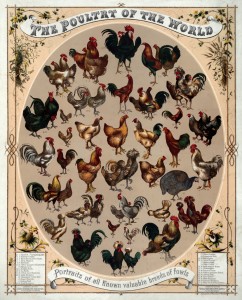Jacob van Etten’s contribution to the birthday celebrations…
“Darwin must die,” writes Carl Safina on the occasion of the man’s 200th birthday. Darwin shouldn’t take it personally. Safina means to say that Darwinism stands in the way of fully appreciating the value of modern biology.
“Darwinism†implies an ideology adhering to one man’s dictates, like Marxism. Charles Darwin didn’t invent a belief system. He had an idea, not an ideology. Our understanding of how life works since Darwin won’t swim in the public pool of ideas until we kill the cult of Darwinism.
I agree. And there is more.
Darwin’s biographer, Janet Browne, illuminates another aspect of Darwinian science. Darwin collected much of his data by writing letters, many letters. He requested information from all kinds of people, fellow naturalists, but also farmers, breeders, civil servants and army officers. Some 14,000 of the letters Darwin wrote or received have been stored in libraries, and many more may have been lost. What Browne describes is something that verges on systematic exploitation.
The flow of information [Darwin] initiated was almost always one-way. Darwin regarded his correspondence primarily as a supply system, designed to answer his own wants. There was no doubt the legitimacy of this one-way arrangement. After all, he occupied an assured place in the intellectual elite, at the heart of an expanding scientific and social meritocracy that in turn lay at the hub of one of the most powerful and systematically organised empires known to history.
Darwin’s 200th birthday is a good occasion not only to do away with Darwin, but also with the whole idea of Big Man science. So, kill Darwin, and Vavilov, too. Make science a collaborative, reciprocal learning effort. Welcome Science 2.0. Each farm is an evolutionary biology lab. Everybody is a scientist.
